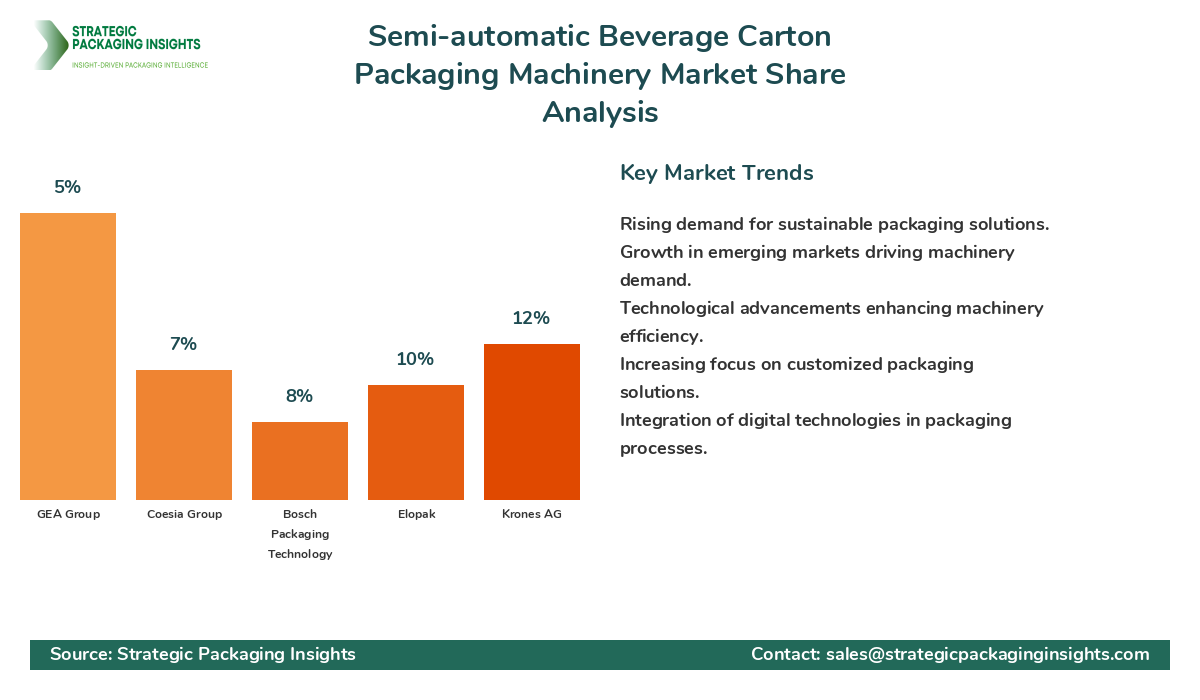- Home
- Beverage Packaging
- Semi-automatic Beverage Carton Packaging Machinery Market Size, Future Growth and Forecast 2033
Semi-automatic Beverage Carton Packaging Machinery Market Size, Future Growth and Forecast 2033
Semi-automatic Beverage Carton Packaging Machinery Market Segments - by Component (Machinery, Software, Services), Application (Dairy, Juices, Alcoholic Beverages, Non-Alcoholic Beverages, Others), End-User (Small and Medium Enterprises, Large Enterprises), and Region (Asia Pacific, North America, Latin America, Europe, and Middle East & Africa) - Market Dynamics, Growth Opportunities, Strategic Drivers, and PESTLE Outlook (2025–2033)
Semi-automatic Beverage Carton Packaging Machinery Market Outlook
The semi-automatic beverage carton Packaging Machinery market was valued at $1.5 billion in 2024 and is projected to reach $2.3 billion by 2033, growing at a CAGR of 4.8% during the forecast period 2025-2033. This market is driven by the increasing demand for efficient and cost-effective packaging solutions in the beverage industry. The semi-automatic machinery offers a balance between manual and fully automated systems, providing flexibility and ease of use, which is particularly appealing to small and medium-sized enterprises. The growing trend of sustainable packaging and the need for reducing packaging waste are also significant drivers, as these machines often support eco-friendly materials and processes.
Report Scope
| Attributes | Details |
| Report Title | Semi-automatic Beverage Carton Packaging Machinery Market Size, Future Growth and Forecast 2033 |
| Base Year | 2024 |
| Historic Data | 2017-2023 |
| Forecast Period | 2025-2033 |
| Number of Pages | 215 |
| Component | Machinery, Software, Services |
| Application | Dairy, Juices, Alcoholic Beverages, Non-Alcoholic Beverages, Others |
| End-User | Small and Medium Enterprises, Large Enterprises |
| Region | Asia Pacific, North America, Latin America, Europe, Middle East & Africa |
| Customization Available | Yes* |
Opportunities & Threats
One of the primary opportunities in the semi-automatic beverage carton packaging machinery market is the rising demand for customized packaging solutions. As consumer preferences shift towards personalized and unique packaging, manufacturers are increasingly investing in machinery that can accommodate a variety of carton sizes and designs. This trend is particularly strong in the premium beverage segment, where packaging plays a crucial role in brand differentiation. Additionally, the growing focus on sustainability presents an opportunity for manufacturers to develop machinery that supports recyclable and biodegradable materials, aligning with global environmental goals.
Another opportunity lies in the expansion of the beverage industry in emerging markets. As disposable incomes rise and urbanization increases, the demand for packaged beverages is expected to grow, driving the need for efficient packaging solutions. This is particularly evident in regions like Asia Pacific and Latin America, where the beverage industry is experiencing rapid growth. Manufacturers who can offer cost-effective and scalable solutions are likely to gain a competitive edge in these markets.
However, the market faces certain restraints, such as the high initial investment required for semi-automatic machinery. Small and medium-sized enterprises, which form a significant portion of the target market, may find it challenging to allocate resources for such investments. Additionally, the availability of low-cost manual alternatives and the complexity of integrating semi-automatic systems into existing production lines can pose challenges to market growth. These factors may limit the adoption of semi-automatic machinery, particularly in cost-sensitive markets.
The competitive landscape of the semi-automatic beverage carton packaging machinery market is characterized by the presence of several key players who dominate the market with their extensive product portfolios and strong distribution networks. Companies such as Tetra Pak, SIG Combibloc, and Krones AG hold significant market shares due to their established brand reputation and continuous innovation in packaging technology. These companies focus on developing machinery that offers high efficiency, flexibility, and compatibility with various packaging materials, catering to the diverse needs of the beverage industry.
In addition to these major players, there are several regional and local manufacturers who contribute to the market dynamics. These companies often focus on providing cost-effective solutions tailored to the specific needs of local markets. For instance, companies in Asia Pacific and Latin America are increasingly investing in semi-automatic machinery to cater to the growing demand for packaged beverages in these regions. The competitive landscape is further intensified by the entry of new players who bring innovative technologies and business models to the market.
Tetra Pak, a leading player in the market, is known for its comprehensive range of packaging solutions that cater to various beverage segments. The company emphasizes sustainability and innovation, offering machinery that supports eco-friendly materials and processes. SIG Combibloc, another major player, focuses on providing flexible and efficient packaging solutions that enhance product shelf life and reduce waste. Krones AG, with its extensive experience in the beverage industry, offers a wide range of machinery that integrates seamlessly with existing production lines, providing high efficiency and reliability.
Other notable companies in the market include Elopak, Bosch Packaging Technology, and Coesia Group, each contributing to the market with their unique offerings and strategic partnerships. These companies are actively involved in research and development to enhance their product offerings and maintain a competitive edge. The market is also witnessing strategic collaborations and mergers and acquisitions, as companies seek to expand their product portfolios and geographic presence.
Key Highlights Semi-automatic Beverage Carton Packaging Machinery Market
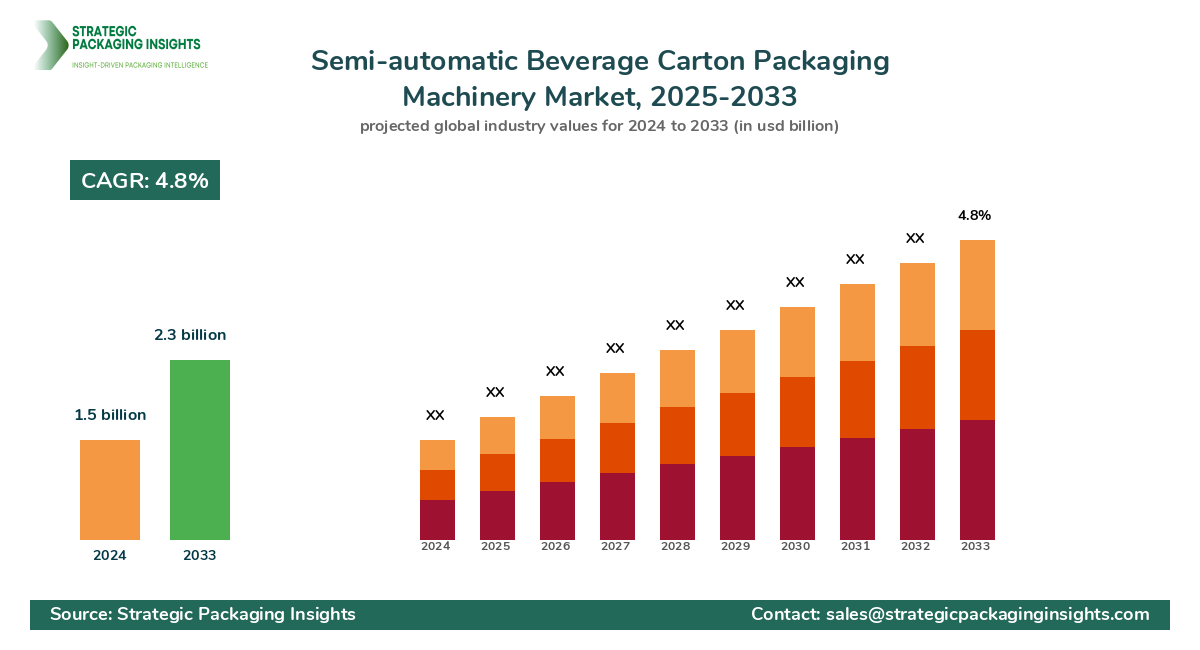
- Increasing demand for sustainable and eco-friendly packaging solutions.
- Rising adoption of semi-automatic machinery in small and medium-sized enterprises.
- Expansion of the beverage industry in emerging markets driving demand.
- Technological advancements enhancing machinery efficiency and flexibility.
- Growing trend of customized and personalized packaging solutions.
- High initial investment costs posing a challenge for small enterprises.
- Strategic collaborations and partnerships shaping market dynamics.
- Focus on reducing packaging waste and improving recyclability.
- Integration of digital technologies for enhanced operational efficiency.
- Regulatory support for sustainable packaging practices.
Premium Insights - Key Investment Analysis
The semi-automatic beverage carton packaging machinery market is witnessing significant investment activity, driven by the growing demand for efficient and sustainable packaging solutions. Venture capital firms and private equity investors are increasingly focusing on companies that offer innovative machinery capable of supporting eco-friendly materials and processes. The market is also seeing a rise in mergers and acquisitions, as established players seek to expand their product portfolios and geographic reach. These transactions are often motivated by the need to enhance technological capabilities and gain access to new customer segments.
Investment valuations in the market are influenced by factors such as the company's technological expertise, market presence, and growth potential. Companies that demonstrate strong R&D capabilities and a commitment to sustainability are particularly attractive to investors. The return on investment (ROI) expectations in this market are generally high, given the increasing demand for packaging solutions and the potential for cost savings through operational efficiencies. However, investors must also consider risk factors such as regulatory changes, market competition, and the availability of alternative packaging solutions.
Emerging investment themes in the market include the development of machinery that supports digital integration and automation, enabling manufacturers to enhance operational efficiency and reduce costs. There is also a growing focus on machinery that can accommodate a wide range of packaging materials, including biodegradable and recyclable options. High-potential investment opportunities are likely to be found in regions with rapidly growing beverage industries, such as Asia Pacific and Latin America, where demand for packaged beverages is on the rise.
Semi-automatic Beverage Carton Packaging Machinery Market Segments Insights
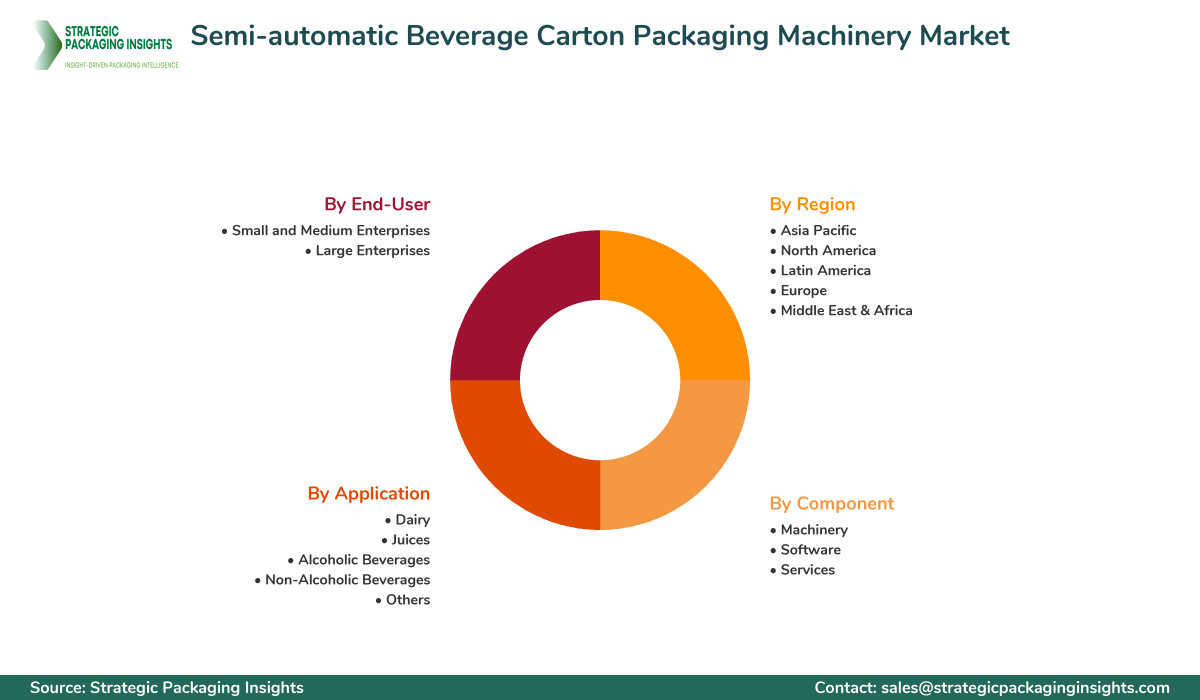
Component Analysis
The component segment of the semi-automatic beverage carton packaging machinery market includes machinery, software, and services. Machinery forms the largest sub-segment, driven by the need for efficient and reliable packaging solutions in the beverage industry. Manufacturers are focusing on developing machinery that offers high speed, flexibility, and compatibility with various packaging materials. The software sub-segment is gaining traction as companies seek to integrate digital technologies for enhanced operational efficiency and process optimization. Services, including maintenance and technical support, are crucial for ensuring the smooth operation of machinery and minimizing downtime.
Application Analysis
The application segment of the market is categorized into dairy, juices, alcoholic beverages, non-alcoholic beverages, and others. The dairy segment holds a significant share, driven by the high demand for packaged milk and dairy products. The juices segment is also witnessing growth, as consumers increasingly prefer convenient and healthy beverage options. The alcoholic beverages segment is characterized by the demand for premium packaging solutions that enhance brand appeal and product differentiation. Non-alcoholic beverages, including soft drinks and energy drinks, are driving demand for flexible and cost-effective packaging solutions.
End-User Analysis
The end-user segment of the market includes small and medium enterprises (SMEs) and large enterprises. SMEs form a significant portion of the market, driven by the need for cost-effective and scalable packaging solutions. These enterprises often prefer semi-automatic machinery due to its affordability and ease of use. Large enterprises, on the other hand, focus on high-efficiency machinery that can handle large production volumes and support diverse packaging requirements. The growing trend of contract packaging is also influencing the demand for semi-automatic machinery, as companies seek to outsource packaging operations to specialized service providers.
Market Share Analysis
The market share distribution of key players in the semi-automatic beverage carton packaging machinery market is influenced by factors such as product innovation, brand reputation, and distribution networks. Companies like Tetra Pak and SIG Combibloc lead the market with their extensive product portfolios and strong global presence. These companies are known for their continuous investment in R&D and commitment to sustainability, which enhances their competitive positioning. The market share distribution also affects pricing strategies, as leading players can leverage their scale and expertise to offer competitive pricing and value-added services.
Top Countries Insights in Semi-automatic Beverage Carton Packaging Machinery
The United States is a leading market for semi-automatic beverage carton packaging machinery, with a market size of $400 million and a CAGR of 5%. The demand is driven by the large beverage industry and the focus on sustainable packaging solutions. Germany, with a market size of $300 million and a CAGR of 4%, is another key market, characterized by technological advancements and a strong focus on innovation. China, with a market size of $250 million and a CAGR of 6%, is experiencing rapid growth due to the expanding beverage industry and increasing urbanization.
India, with a market size of $200 million and a CAGR of 7%, is emerging as a significant market, driven by the rising demand for packaged beverages and the growth of the middle class. Brazil, with a market size of $150 million and a CAGR of 5%, is also witnessing growth, supported by the expanding beverage industry and favorable government policies promoting sustainable packaging practices. These countries present significant opportunities for manufacturers, as they offer a large consumer base and favorable market conditions.
Semi-automatic Beverage Carton Packaging Machinery Market Segments
The Semi-automatic Beverage Carton Packaging Machinery market has been segmented on the basis of
Component
- Machinery
- Software
- Services
Application
- Dairy
- Juices
- Alcoholic Beverages
- Non-Alcoholic Beverages
- Others
End-User
- Small and Medium Enterprises
- Large Enterprises
Region
- Asia Pacific
- North America
- Latin America
- Europe
- Middle East & Africa
Primary Interview Insights
What are the key drivers for the semi-automatic beverage carton packaging machinery market?
What challenges does the market face?
How is the competitive landscape shaping up?
What are the emerging investment themes in this market?
Which regions offer the most growth potential?
Latest Reports

The Hot Melt Glue Labeler market was valued at $1.2 billion in 2024 and is projected to reach $2.3 billion by 2033, growing at a CAGR of 6.5% during the forecast period 2025–2033.

The Ethical Label market was valued at $1.5 billion in 2024 and is projected to reach $3.2 billion by 2033, growing at a CAGR of 8.5% during the forecast period 2025–2033.

The Packaging Tensioner market was valued at $1.2 billion in 2024 and is projected to reach $2.3 billion by 2033, growing at a CAGR of 6.5% during the forecast period 2025–2033.
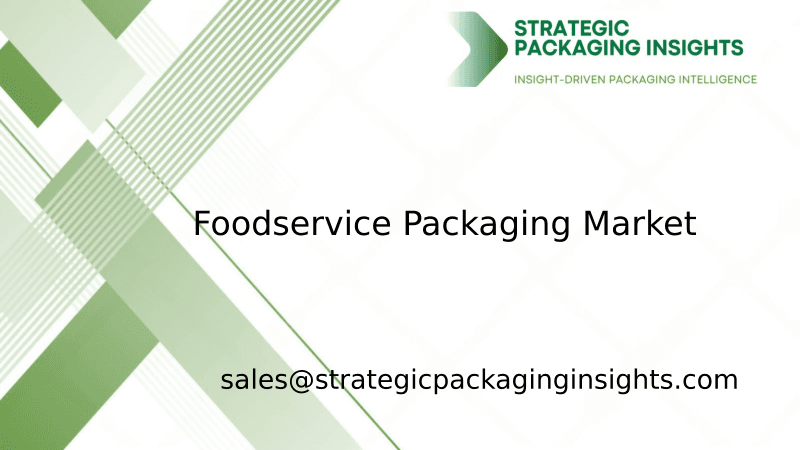
The foodservice packaging market was valued at $120 billion in 2024 and is projected to reach $180 billion by 2033, growing at a CAGR of 4.5% during the forecast period 2025–2033.

The nano-enabled packaging market was valued at $15.2 billion in 2024 and is projected to reach $35.6 billion by 2033, growing at a CAGR of 9.5% during the forecast period 2025–2033.

The Cold Seal Packaging market was valued at $1.5 billion in 2024 and is projected to reach $2.3 billion by 2033, growing at a CAGR of 4.8% during the forecast period 2025–2033.

The Transparent Barrier Packaging Films market was valued at $12.5 billion in 2024 and is projected to reach $20.3 billion by 2033, growing at a CAGR of 5.8% during the forecast period 2025–2033.

The Flatback Tape market was valued at $2.5 billion in 2024 and is projected to reach $4.1 billion by 2033, growing at a CAGR of 5.8% during the forecast period 2025–2033.

The packer bottle market was valued at $3.5 billion in 2024 and is projected to reach $5.8 billion by 2033, growing at a CAGR of 5.2% during the forecast period 2025–2033.
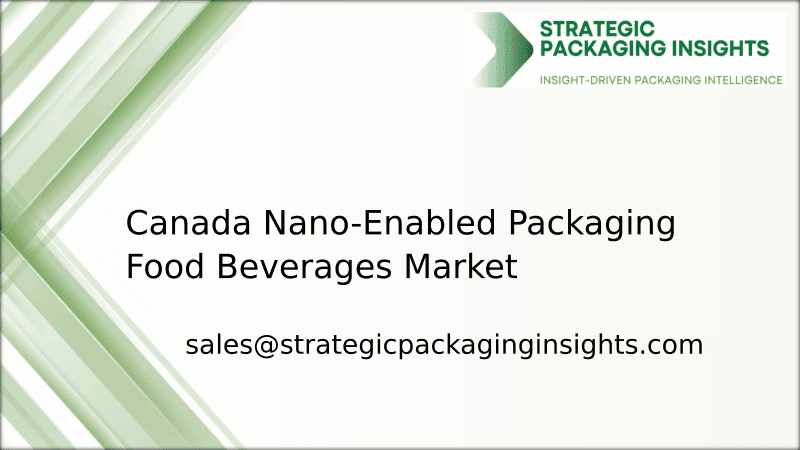
The Canada Nano-Enabled Packaging Food Beverages market was valued at $1.2 billion in 2024 and is projected to reach $3.5 billion by 2033, growing at a CAGR of 12.5% during the forecast period 2025–2033.
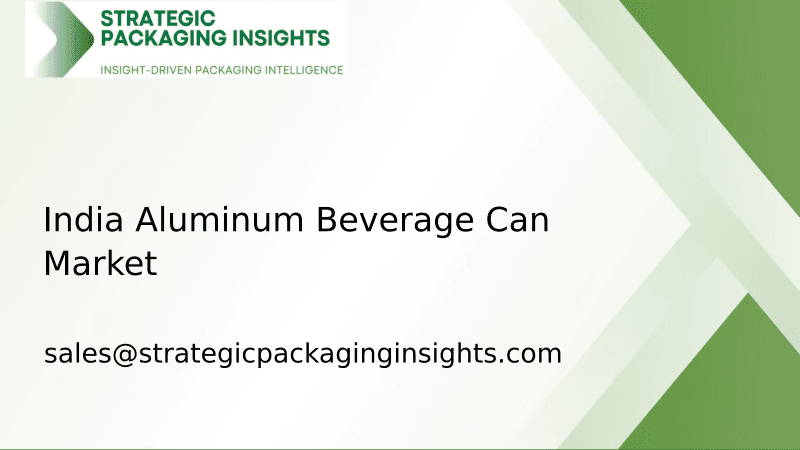
The India Aluminum Beverage Can market was valued at $1.2 billion in 2024 and is projected to reach $2.5 billion by 2033, growing at a CAGR of 8.5% during the forecast period 2025–2033.
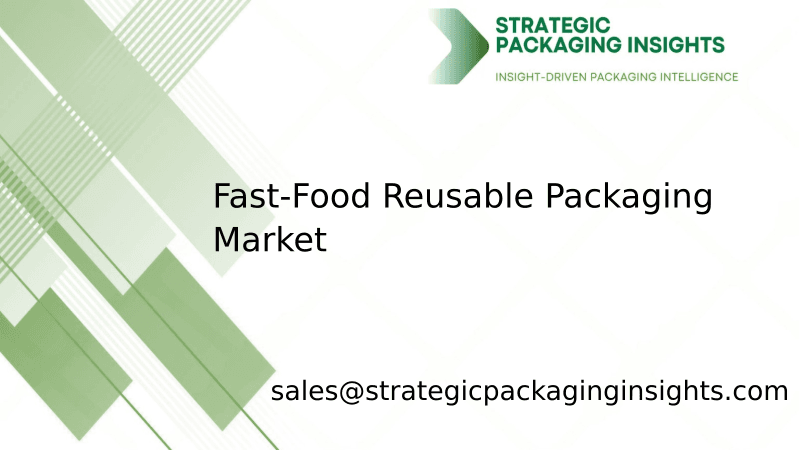
The fast-food reusable packaging market was valued at $1.2 billion in 2024 and is projected to reach $3.5 billion by 2033, growing at a CAGR of 12.5% during the forecast period 2025–2033.
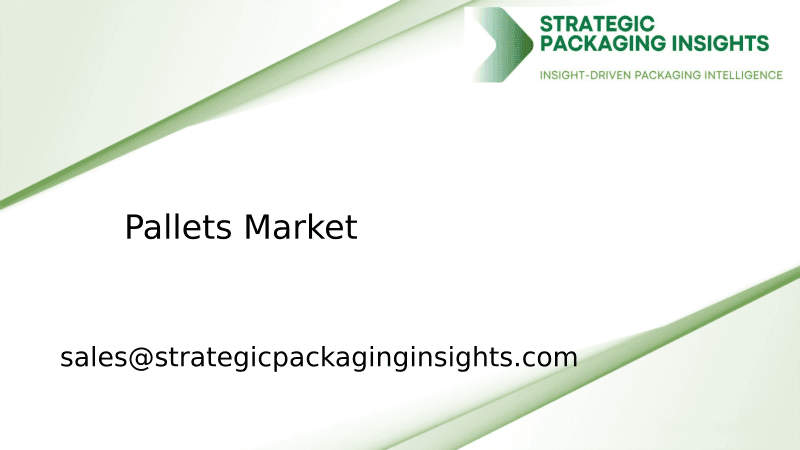
The pallets market was valued at $59.91 billion in 2024 and is projected to reach $88.69 billion by 2033, growing at a CAGR of 4.5% during the forecast period 2025–2033.

The lamination adhesives market was valued at $2.5 billion in 2024 and is projected to reach $4.1 billion by 2033, growing at a CAGR of 5.8% during the forecast period 2025–2033.

The garment packing machine market was valued at $1.2 billion in 2024 and is projected to reach $2.5 billion by 2033, growing at a CAGR of 8.5% during the forecast period 2025–2033.
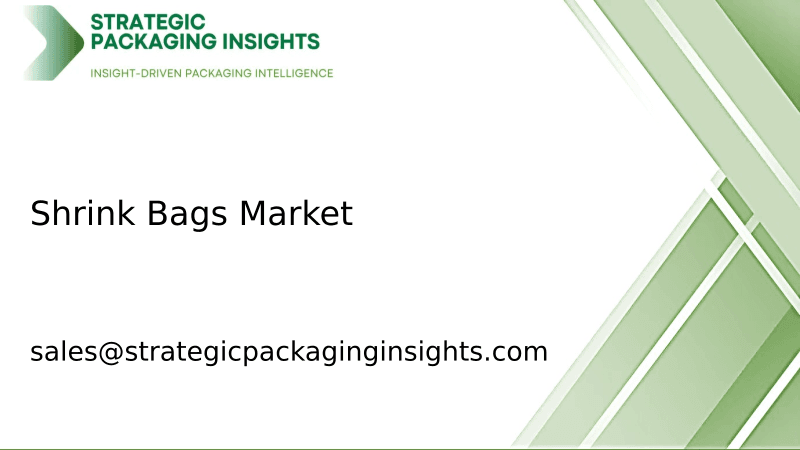
The shrink bags market was valued at $3.5 billion in 2024 and is projected to reach $5.8 billion by 2033, growing at a CAGR of 5.2% during the forecast period 2025–2033.

The beverage packaging market was valued at $128 billion in 2024 and is projected to reach $186 billion by 2033, growing at a CAGR of 4.2% during the forecast period 2025–2033.

The North America Freight and Logistics market was valued at $1,200 billion in 2024 and is projected to reach $1,800 billion by 2033, growing at a CAGR of 4.5% during the forecast period 2025–2033.

The Anti-Counterfeiting Packaging market was valued at $105 billion in 2024 and is projected to reach $182 billion by 2033, growing at a CAGR of 6.5% during the forecast period 2025–2033.

The Active and Modified Atmospheric Packaging market was valued at $15.2 billion in 2024 and is projected to reach $25.8 billion by 2033, growing at a CAGR of 6.5% during the forecast period 2025–2033.

The molded fiber packaging market was valued at $7.5 billion in 2024 and is projected to reach $12.3 billion by 2033, growing at a CAGR of 5.8% during the forecast period 2025–2033.

The micro packaging market was valued at $1.2 billion in 2024 and is projected to reach $2.5 billion by 2033, growing at a CAGR of 8.5% during the forecast period 2025–2033.

The Anti-counterfeit Pharmaceuticals Packaging market was valued at $80 billion in 2024 and is projected to reach $150 billion by 2033, growing at a CAGR of 7.5% during the forecast period 2025–2033.

The MDO-PE Film market was valued at $3.5 billion in 2024 and is projected to reach $5.8 billion by 2033, growing at a CAGR of 5.2% during the forecast period 2025–2033.
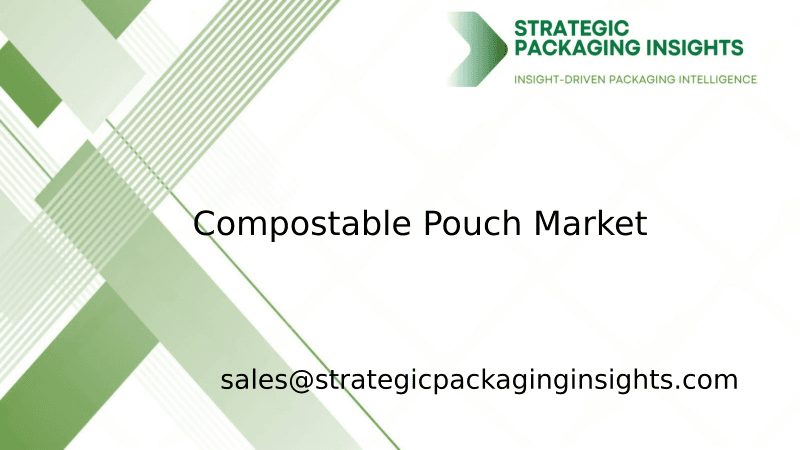
The compostable pouch market was valued at $1.2 billion in 2024 and is projected to reach $3.5 billion by 2033, growing at a CAGR of 12.5% during the forecast period 2025–2033.

The Hot Melt Glue Labeler market was valued at $1.2 billion in 2024 and is projected to reach $2.3 billion by 2033, growing at a CAGR of 6.5% during the forecast period 2025–2033.

The Ethical Label market was valued at $1.5 billion in 2024 and is projected to reach $3.2 billion by 2033, growing at a CAGR of 8.5% during the forecast period 2025–2033.

The Packaging Tensioner market was valued at $1.2 billion in 2024 and is projected to reach $2.3 billion by 2033, growing at a CAGR of 6.5% during the forecast period 2025–2033.

The foodservice packaging market was valued at $120 billion in 2024 and is projected to reach $180 billion by 2033, growing at a CAGR of 4.5% during the forecast period 2025–2033.

The nano-enabled packaging market was valued at $15.2 billion in 2024 and is projected to reach $35.6 billion by 2033, growing at a CAGR of 9.5% during the forecast period 2025–2033.

The Cold Seal Packaging market was valued at $1.5 billion in 2024 and is projected to reach $2.3 billion by 2033, growing at a CAGR of 4.8% during the forecast period 2025–2033.

The Transparent Barrier Packaging Films market was valued at $12.5 billion in 2024 and is projected to reach $20.3 billion by 2033, growing at a CAGR of 5.8% during the forecast period 2025–2033.

The Flatback Tape market was valued at $2.5 billion in 2024 and is projected to reach $4.1 billion by 2033, growing at a CAGR of 5.8% during the forecast period 2025–2033.

The packer bottle market was valued at $3.5 billion in 2024 and is projected to reach $5.8 billion by 2033, growing at a CAGR of 5.2% during the forecast period 2025–2033.

The Canada Nano-Enabled Packaging Food Beverages market was valued at $1.2 billion in 2024 and is projected to reach $3.5 billion by 2033, growing at a CAGR of 12.5% during the forecast period 2025–2033.

The India Aluminum Beverage Can market was valued at $1.2 billion in 2024 and is projected to reach $2.5 billion by 2033, growing at a CAGR of 8.5% during the forecast period 2025–2033.

The fast-food reusable packaging market was valued at $1.2 billion in 2024 and is projected to reach $3.5 billion by 2033, growing at a CAGR of 12.5% during the forecast period 2025–2033.

The pallets market was valued at $59.91 billion in 2024 and is projected to reach $88.69 billion by 2033, growing at a CAGR of 4.5% during the forecast period 2025–2033.

The lamination adhesives market was valued at $2.5 billion in 2024 and is projected to reach $4.1 billion by 2033, growing at a CAGR of 5.8% during the forecast period 2025–2033.

The garment packing machine market was valued at $1.2 billion in 2024 and is projected to reach $2.5 billion by 2033, growing at a CAGR of 8.5% during the forecast period 2025–2033.

The shrink bags market was valued at $3.5 billion in 2024 and is projected to reach $5.8 billion by 2033, growing at a CAGR of 5.2% during the forecast period 2025–2033.

The beverage packaging market was valued at $128 billion in 2024 and is projected to reach $186 billion by 2033, growing at a CAGR of 4.2% during the forecast period 2025–2033.

The North America Freight and Logistics market was valued at $1,200 billion in 2024 and is projected to reach $1,800 billion by 2033, growing at a CAGR of 4.5% during the forecast period 2025–2033.

The Anti-Counterfeiting Packaging market was valued at $105 billion in 2024 and is projected to reach $182 billion by 2033, growing at a CAGR of 6.5% during the forecast period 2025–2033.

The Active and Modified Atmospheric Packaging market was valued at $15.2 billion in 2024 and is projected to reach $25.8 billion by 2033, growing at a CAGR of 6.5% during the forecast period 2025–2033.

The molded fiber packaging market was valued at $7.5 billion in 2024 and is projected to reach $12.3 billion by 2033, growing at a CAGR of 5.8% during the forecast period 2025–2033.

The micro packaging market was valued at $1.2 billion in 2024 and is projected to reach $2.5 billion by 2033, growing at a CAGR of 8.5% during the forecast period 2025–2033.

The Anti-counterfeit Pharmaceuticals Packaging market was valued at $80 billion in 2024 and is projected to reach $150 billion by 2033, growing at a CAGR of 7.5% during the forecast period 2025–2033.

The MDO-PE Film market was valued at $3.5 billion in 2024 and is projected to reach $5.8 billion by 2033, growing at a CAGR of 5.2% during the forecast period 2025–2033.

The compostable pouch market was valued at $1.2 billion in 2024 and is projected to reach $3.5 billion by 2033, growing at a CAGR of 12.5% during the forecast period 2025–2033.
